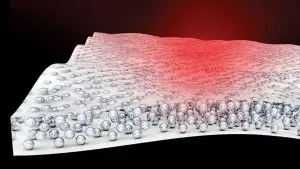As Electronics Cooling engineers, we can say this unequivocally –the root cause of heat in electronics systems is power! Barring external and environmental influences, heat dissipation in electronic devices is an unavoidable side effect in any powered electronic device. In this blog, we will take a look at the Internet of Things (IoT) Gateways, in particular Edge Gateways … [Read more...]
A Novel Approach to Development of a Thermal Capacitor
INTRODUCTION In terrestrial or air-borne electrical and electronic systems, cooling requirements can be unsteady due to spikes in heat load, or changes in ambient conditions. Such an event results in a sharp rise in system temperature or temperature cycling thus possibly reducing the system reliability. In the electrical domain, fluctuations in voltage are managed by using … [Read more...]
Low Cost Plastic Films Lower Exposed Surface Temperatures by 10°C
Low-emissivity (Low-E) films are not new –they represent a mature technology in which a metal-oxide coated surface emits low levels of radiant thermal energy. Low-E films are widely used on window glasses in energy-efficient buildings. Low-E materials include metals like Aluminum foil which has a thermal emissivity /absorptance of 0.03 which means that it reflects 97 percent of … [Read more...]
Case Study: Thermal Design and Analysis of a Combat-Ready Electronics Unit
INTRODUCTION Militaries continue to expand their use of electronics in harsh environments while preserving an absolute minimal risk of failure. In this regard, effort spent early in the design process on concept development, parametric and trade-off studies, and simulation-driven design can yield amplified benefits in terms of product performance and reliability, reduced … [Read more...]
Cooling Circuits with Nanochimneys in Carbon Nanotubes
The extraordinary properties of Graphene are well known, and in the context of electronics thermal management and reliability, it is about 200 times stronger than the strongest steel and conducts heat and electricity very efficiently. Both graphene and carbon nanotubes consist of six-atom rings, which create the well-known hexagonal Honeycomb structure, and both excel at the … [Read more...]
- « Previous Page
- 1
- …
- 7
- 8
- 9
- 10
- 11
- …
- 126
- Next Page »









